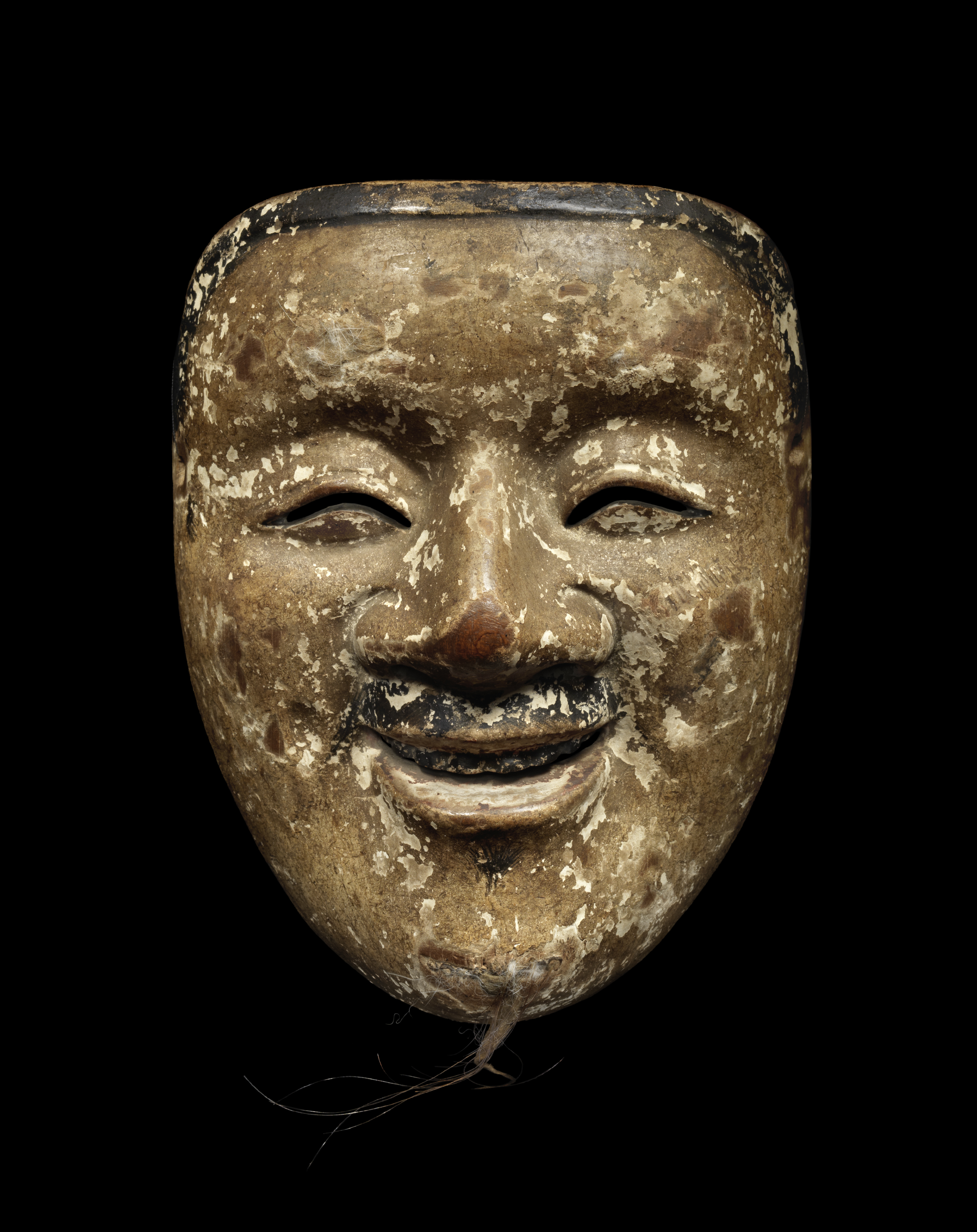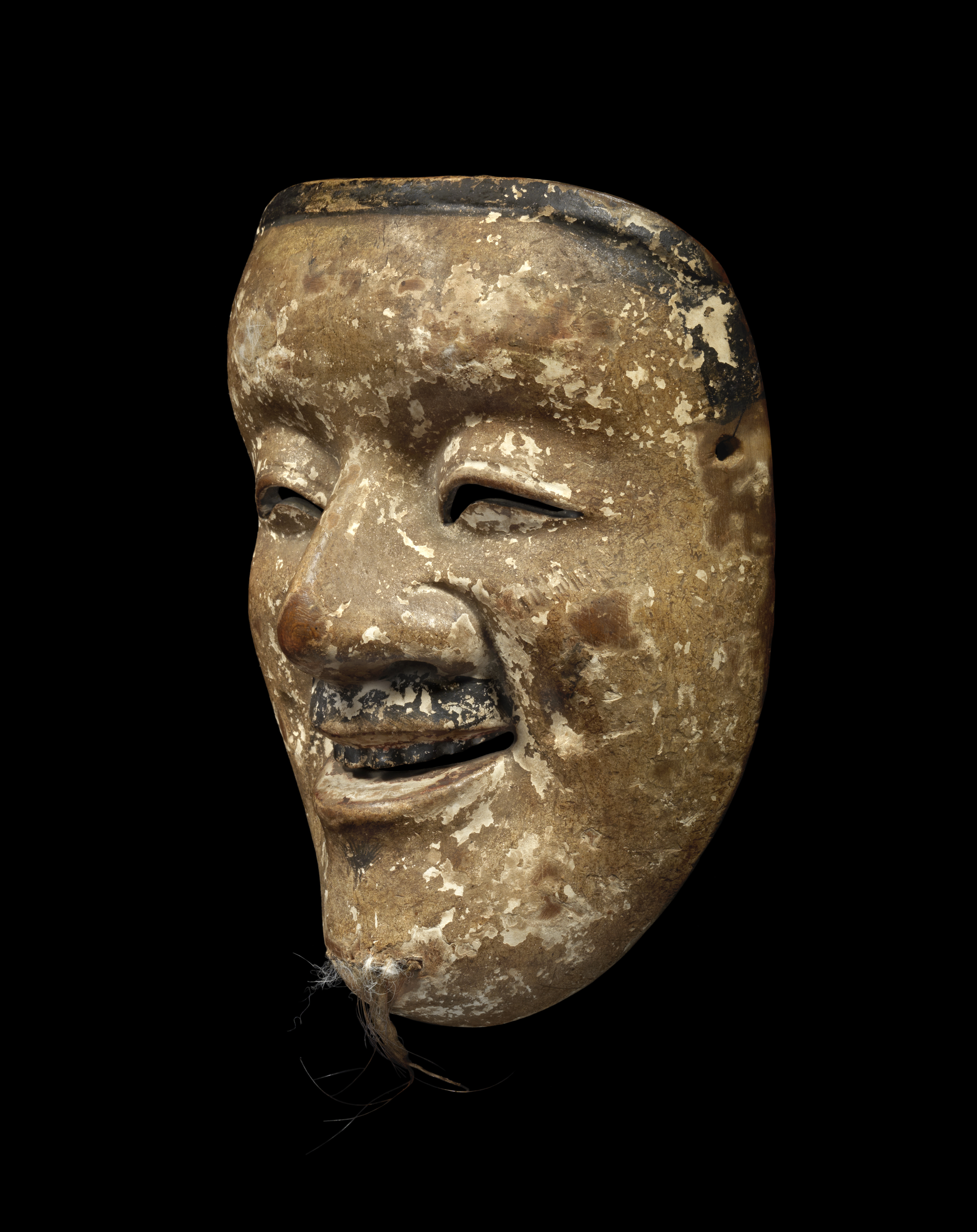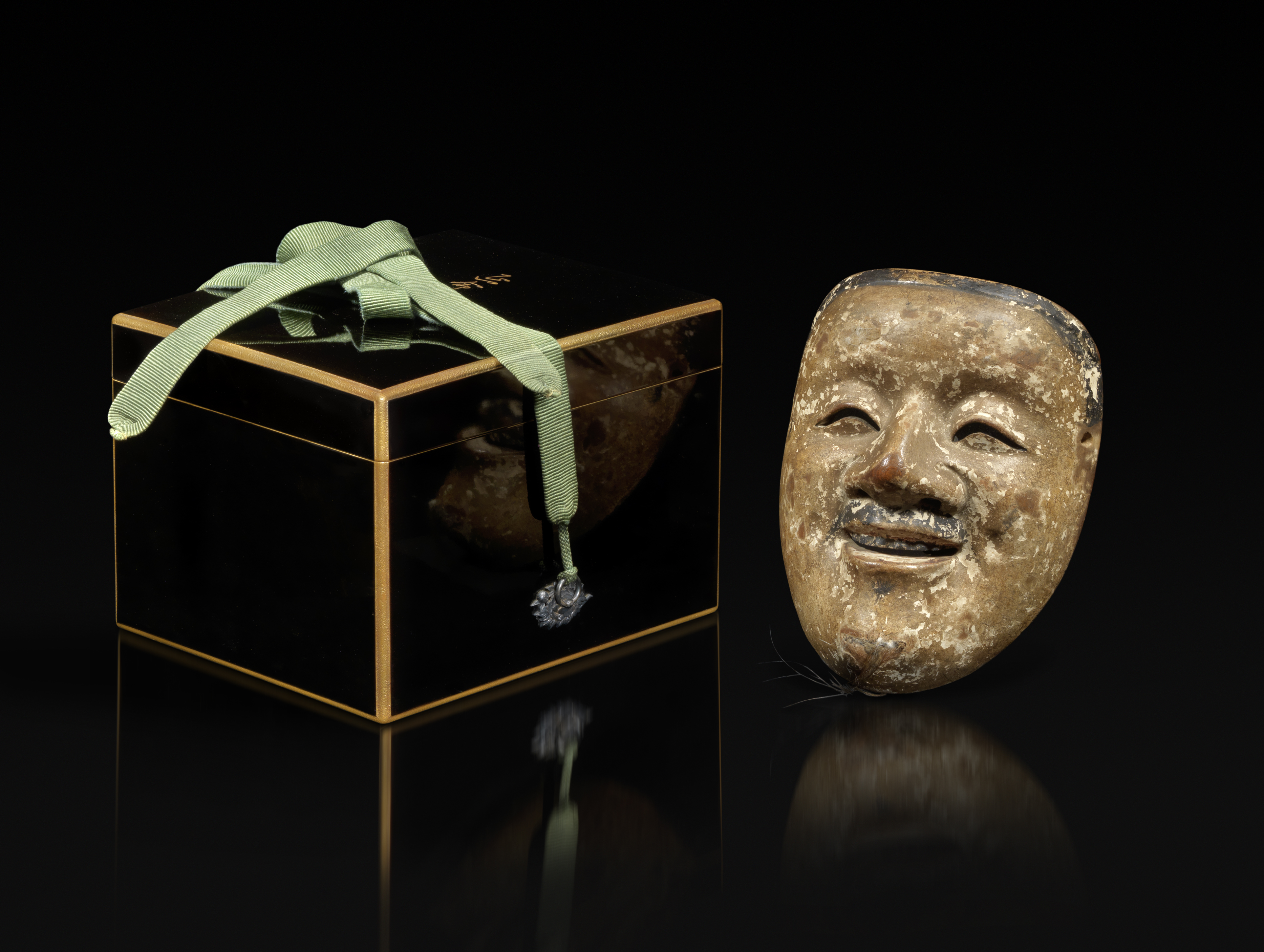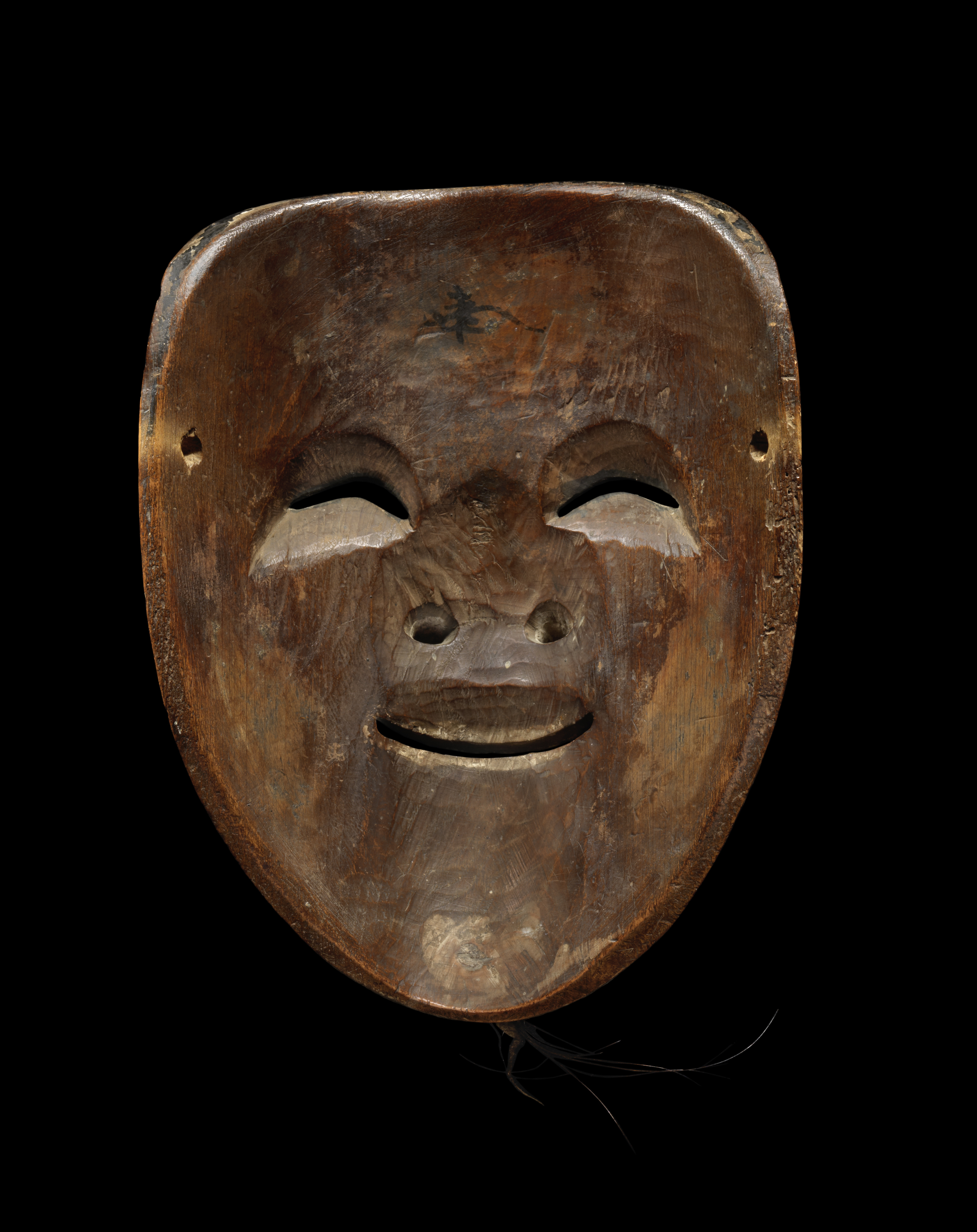Enmei Kajya
Masque

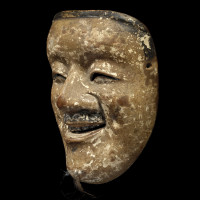

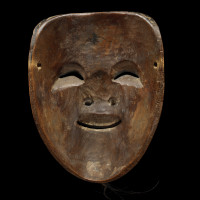
- Vendu
-
Matériel
Bois laqué
-
Période
Kamakura period (1185-1333) or early Muromachi period (1392-1573)
-
Boîtes
Boîte en bois
Description
Nō developed from Sarugaku, a type of theater performed at temple and shrine festivals in the Kamakura and Muromachi periods. It reached a peak under the actor and playwright Ze'ami around the early 14th century. From the mid-Edo period in the 18th century, Noh became the ceremonial theater of Japan's ruling warrior class.
Enmei-Kajya has an almost chubby face and a smiling expression, half closed eyes and full lips arched to show the upper row of teeth. The man is full of energy and his facial outlines as well as the presence of a thin black moustache, reflect this privileged condition. Enmei-Kajya is the "adult man who prolongs life", who is evoked in order to bring longevity. Originally Enmei-Kajya’s mask was part of the Sarugaku repertoire, and it belonged to the group of the Okina "old men". But it already differentiated itself, for it was the only one that did not portray an old woman; also, it had no moving lower jaw like the others. It appeared in the Okina ritual dance in the scene Junitsuki Orai in the company of Chichinojo (the latter having the role of Enmei-Kajya ‘s father), and it was sometimes used in the Noh drama called Sagi. Then it came into the repertoire of popular Kagura masks and of Kyōgen masks. The oldest masks of Enmei-Kajya known date from the Kamakura period (Chusonji temple in Iwate prefecture and Nagataki Hakusan Jinja shrine in Gifu prefecture), which is well before the Noh theater appeared. For this reason, stylistically they still reflect Heian aesthetics, and certain affinities with some Bugaku masks. Probably it was Enmei-Kajya's mask that was used as a prototype for some types of Noh masks.
On the wooden box and in the lacquered box for the mask we find some information about it, i.e. its supposed origin, from Kamigamo -one of the most important Shinto temples in Kyoto- and its dating to the Kamakura period.
